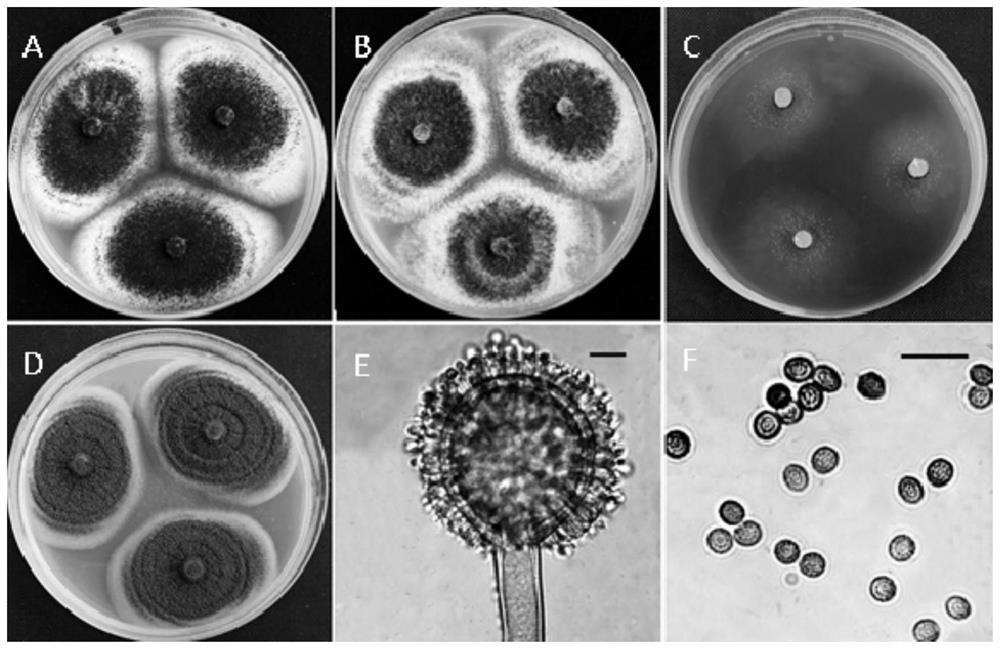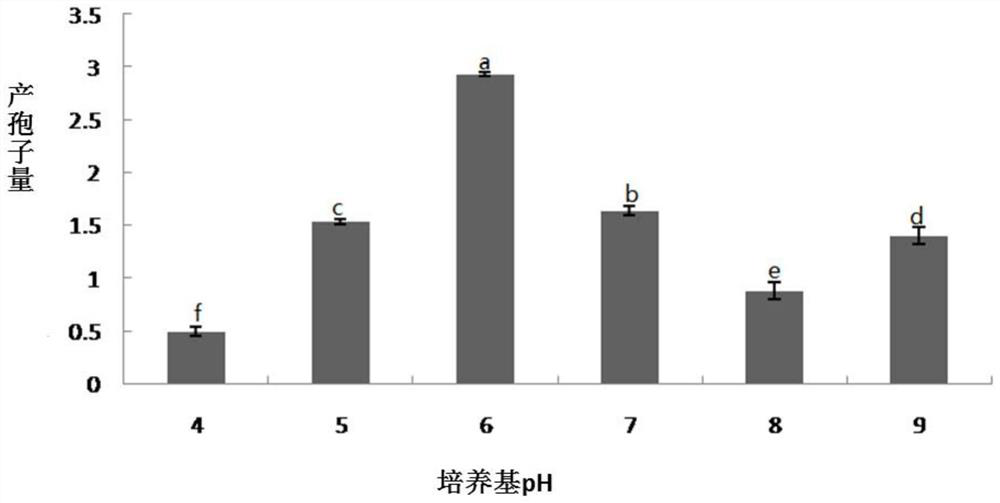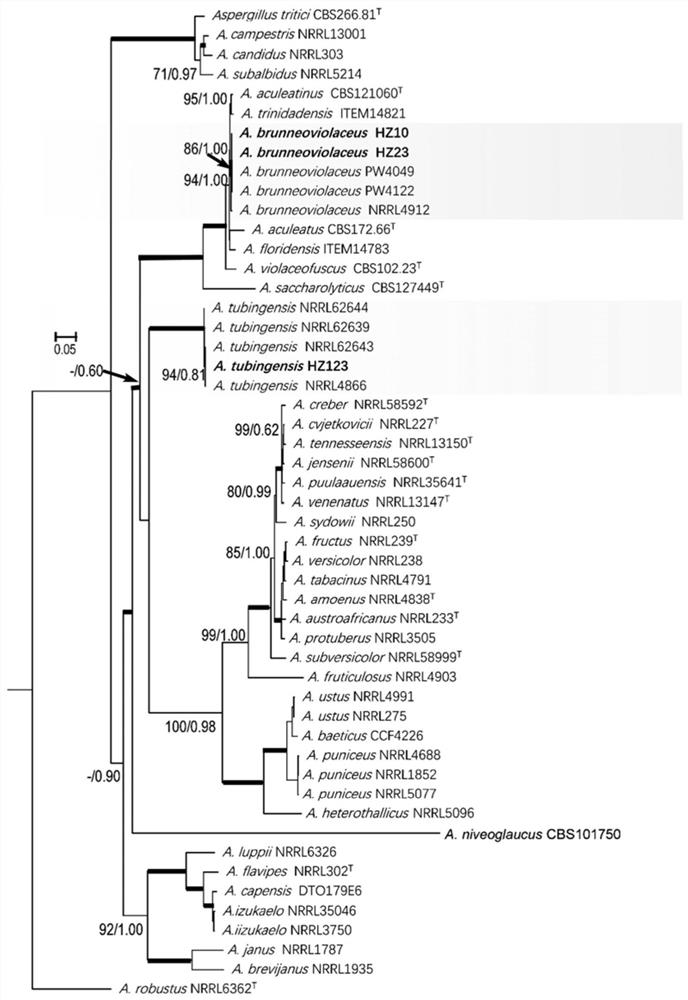Aspergillus flavus strains and uses thereof
A technology of Aspergillus purpureus and Aspergillus purpura, applied in the field of microbial preparations, can solve the problems of poor nutrition, unfavorable plant growth, unfavorable soil microbial reproduction, etc., and achieve the effects of promoting growth, improving population structure, and increasing crop biomass
- Summary
- Abstract
- Description
- Claims
- Application Information
AI Technical Summary
Problems solved by technology
Method used
Image
Examples
Embodiment 1
[0026] Isolation, purification, screening and identification of the isolated line of embodiment 1
[0027] 1. Isolation and Purification
[0028] The soil of barren land under the forest in Sanmen County, Taizhou City, Zhejiang Province was collected by the 5-point sampling method, put in a clean sealed bag, and brought back to the laboratory. Soil microbial strains were isolated by soil dilution method. That is, weigh 2g of soil sample in 18mL of double distilled water (ddH 2 (0), shake on a shaker at 180rpm for 30min to make 10 -1 Soil dilution; take 1mL of this dilution to contain 9mL ddH 2 O centrifuge tubes, made of 10 -2 soil dilution; and so on, to get 10 -3 、10 -4 Soil dilution. Take 100μL of 10 -3 and 10 -4 Soil dilution, spread on the potato dextrose agar medium (PDA) plate, and place it in a 25°C incubator for 3 to 4 days, and select the colony with fast growth rate (large colony) and different colony shapes (for example, color, Sparse or dense hyphae, con...
Embodiment 2
[0058] Embodiment 2 Determination of phosphorus dissolving ability
[0059] The isolates HZ23, P. oxalicum HZ06, A. brunneoviolaceus HZ10, and A. tubingensis HZ123 preserved at -70°C were placed on potato dextrose agar medium ( PDA) plate was cultured and activated at 25°C for 3 days;
[0060] Bacteria slices (5 mm in diameter) were cut out with a hole punch and transferred to NBRI-MTSB medium plates, cultured at 25°C for 3 days, and the diameter of the phosphorus-dissolving circle was measured.
[0061] see Figure 4 , the experimental results show that the diameter of the phosphorus-dissolving circle of the separation system HZ23 is 3.88±0.25cm ( Figure 4 B), although it is larger than Aspergillus flavus HZ10 (3.60±0.18cm) ( Figure 4 C) and Penicillium oxalicum (Penicillium oxalicum) HZ06 (3.48±0.05cm) ( Figure 4 A), but significantly smaller than the diameter of the phosphorus-dissolving circle of Aspergillus tubingensis (A. tubingensis) HZ123 (4.20±0.21cm) ( Figur...
Embodiment 3
[0062] Example 3 Determination of Siderophore Ability
[0063] The four strains activated in Example 2 were respectively cut out with a puncher to cut bacterial slices (5 mm in diameter) and transferred to CAS medium plates and cultured at 25° C. for 3 days, and the diameter of the orange-yellow halo was measured.
[0064] see Figure 5 , the diameter of the orange-yellow halo of the separation system HZ23 is 1.23±0.39cm ( Figure 5 B), larger than Aspergillus fusiformis HZ10 (1.04±0.24cm) ( Figure 5 C), but significantly smaller than Aspergillus tubingensis HZ123 (2.78±0.71cm) ( Figure 5 D) and Penicillium oxalicum HZ06 (2.05±0.56cm) ( Figure 5 A).
PUM
| Property | Measurement | Unit |
|---|---|---|
| diameter | aaaaa | aaaaa |
Abstract
Description
Claims
Application Information
 Login to View More
Login to View More - Generate Ideas
- Intellectual Property
- Life Sciences
- Materials
- Tech Scout
- Unparalleled Data Quality
- Higher Quality Content
- 60% Fewer Hallucinations
Browse by: Latest US Patents, China's latest patents, Technical Efficacy Thesaurus, Application Domain, Technology Topic, Popular Technical Reports.
© 2025 PatSnap. All rights reserved.Legal|Privacy policy|Modern Slavery Act Transparency Statement|Sitemap|About US| Contact US: help@patsnap.com



